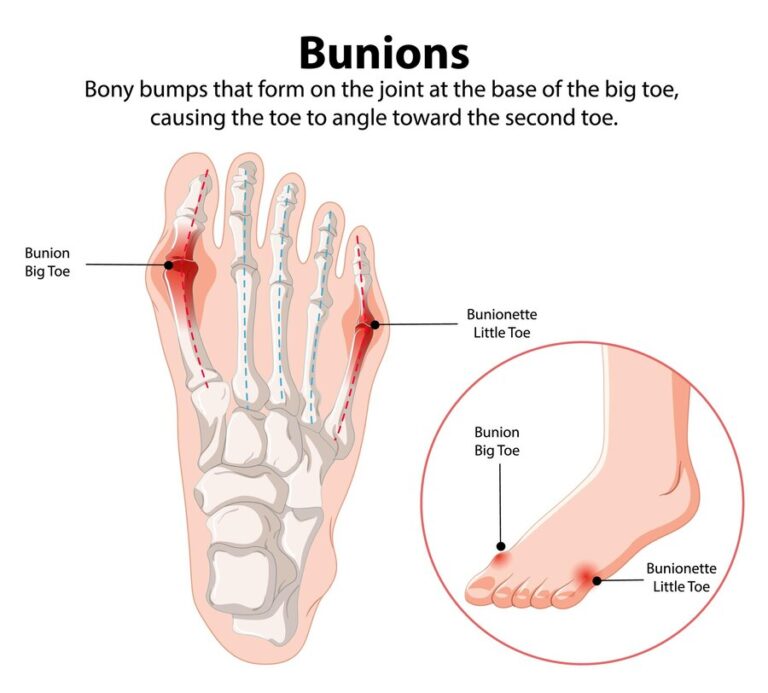Bunions are a common foot condition that may cause significant discomfort if left unaddressed. Characterized by a noticeable bump at the base of the big toe, bunions develop gradually over time, often resulting in a misaligned joint. While anyone can develop bunions, adults are particularly susceptible due to the cumulative effects of lifestyle choices, footwear, and genetics.
What Causes Bunions?
Bunions are typically the result of prolonged pressure on the big toe joint, which causes the joint to shift out of alignment. Over time, this leads to the bony bump commonly associated with the condition. Several factors can contribute to the development of bunions, including:
- Genetics: A family history of bunions may increase the likelihood of developing them. This does not mean bunions themselves are inherited, but rather the foot structures that predispose someone to them.
- Footwear Choices: Shoes with a narrow or pointed toe box, high heels, or insufficient arch support may exacerbate pressure on the toes, accelerating the development of bunions.
- Biomechanical Issues: Structural foot problems, such as flat feet, overpronation, or low arches, can increase strain on the big toe joint, encouraging misalignment.
How Do You Prevent Them?
Taking proactive steps can reduce the likelihood of developing bunions or slowing their progression. While there is no guaranteed prevention method, adopting certain habits may contribute to healthier feet:
- Choose Appropriate Footwear: Select shoes that provide adequate room for your toes, good arch support, and a low or moderate heel. Look for footwear that conforms naturally to the shape of your foot. Avoid tight, narrow, or pointy shoes that place undue pressure on the forefoot.
- Maintain Healthy Foot Mechanics: Insoles or orthotics can help address biomechanical issues like overpronation or flat feet. These support devices align the foot correctly, reducing stress on the big toe joint. Speak with a podiatrist to find out whether orthotics could assist with foot alignment.
How Do You Treat Bunions?
Once a bunion has developed, treatment typically focuses on symptom management and addressing the underlying causes to prevent further progression. Although surgical options exist in more advanced cases, many individuals benefit from non-invasive treatments. Switching to comfortable, supportive shoes can immediately reduce pressure on the affected area. Shoes with a wide toe box, low heels, and soft materials may provide relief while allowing room for the bunion.
Custom or over-the-counter orthotic insoles can help distribute weight evenly across the foot and address structural issues that may contribute to bunions. These devices are particularly effective for those with flat feet or excessive pronation. Over-the-counter anti-inflammatory medications, as well as ice packs applied to the sore area, can alleviate swelling and discomfort. Therapists may recommend exercises to strengthen the foot muscles, improve joint flexibility, and reduce pain. For individuals with severe bunions causing significant pain or impairing mobility, surgery may be suggested. Several surgical techniques aim to realign the joint, remove excess bone, or correct structural deformities.
Concluding Thoughts
Bunions can impact mobility and quality of life, but proactive measures can significantly reduce the risk of developing them or manage existing cases effectively. Knowing what causes bunions, understanding preventive strategies, and exploring available treatments empower individuals to care for their foot health. If you suspect a bunion is developing or need help managing one, consult with a healthcare professional to chart a path forward that works for you.

